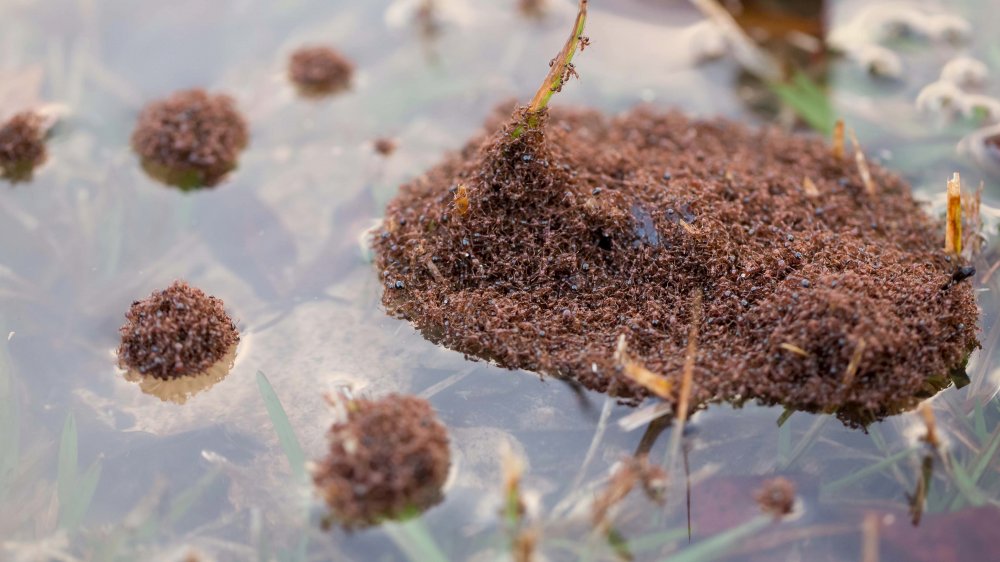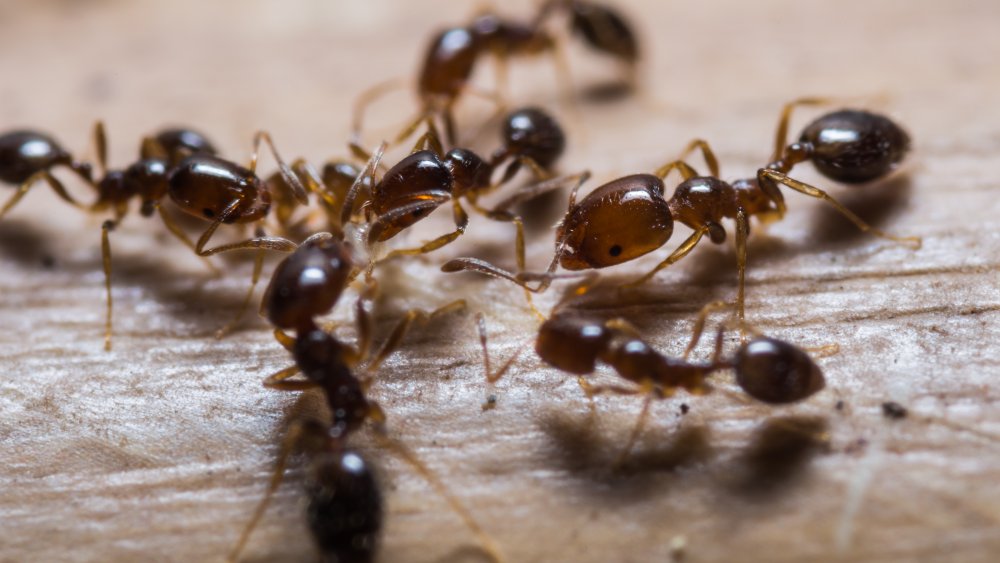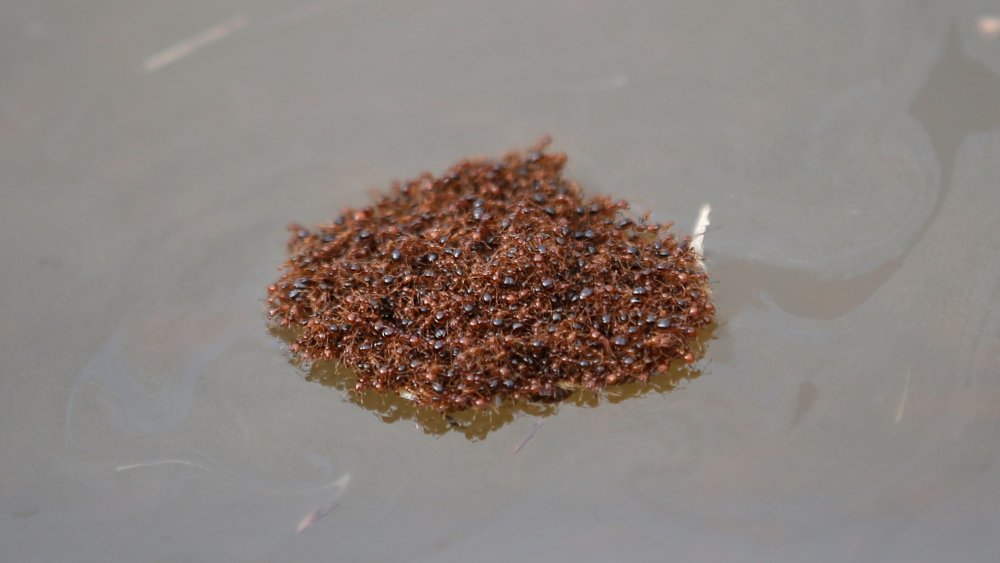The Scary Truth About Floating Ant Piles
Something creepy is happening in Texas. In the aftermath of tropical storm Beta, League City, Texas released a video of a clump of ants floating over floodwater, reported ABC. in the video, a pile of reddish-brown things, confirmed to be ants, look to undulate over the floodwaters. From afar, the clump looks like debris floating on top of the water, but upon closer inspection, you can see that it's made up of what looks like hundreds of insects clinging for dear life. If the visual of ants just happily floating along doesn't scare you, well, congratulations. What a brave person you are.
And these aren't even regular ants; these are fire ants. Fire ants, also called thief ants, can destroy crops and even attack poultry, writes Encyclopedia Britannica. These are not native to the United States and were accidentally introduced to the country from South America. Fire ants cause itchy, painful bumps.
If you're allergic to insect bites, fire ant bites are especially dangerous, and potentially even fatal. According to CBS, fire ants have been responsible for deaths in the United States, even though they don't have the deadliest venom in insect kind. While the sting can hurt a lot, the ants emit a signal that makes all other ants in the colony start biting you, too. These floating piles of ants are nothing to scoff at.
They're on a survival mission
The ants don't form a raft just for aquatic recreation. Scientific American explains that fire ants do this as a form of survival for the entire colony. The ants will climb on top of each other to form a solid mass. This mass protects the whole colony and will keep the entire thing together until it can reach solid ground again and reform. Fire ants can do this even on dry land and have been known to create tall towers made up entirely of ants. They don't actually decide what shape to take based on sight, since fire ants encounter the world through smell and touch.
According to The Verge, the ants have a waxy body that repels water, causing them to float. The ants link their feet together and just hang on until they're out of the water. Even if a wave hits them, these clumps rarely fragment. Their surface tension is so high that usually only liquid soap can break them apart. If you break them apart with soap, some of the ants will slowly sink and drown.
Fire ant piles, however, are not a purely 2020 invention. It's a natural occurrence during flooding. Texans saw these clumps a few years ago after Hurricane Harvey. Scientific American pointed out the ants didn't have the chance to do this after Hurricane Katrina, because the floods came too fast for them to connect to each other.
Do not approach these ants at all
As fascinating a feat of engineering these ant piles are, do not, under any circumstances, play around with them. The Verge warns that the ants will crawl up anything solid they encounter. The best thing to do, other than avoid them by all means, is to brush them off quickly before more come up your leg or arm. The ants kind of curl up if you brush them.
The fire ants do make it difficult to survive in a flood-prone area. NPR reports that walking along flood waters disturbs the ants. Don't try to wash them off, because water just makes them cling harder on your skin. Brush them off. Boats can sometimes break through the ants, which lets them climb up paddles or boat hulls. Rescue efforts can be hampered as well. Because the ants are looking for anything solid, they can transfer to other floating debris. When floodwaters dry, they pose a risk to rescue workers or those involved in rebuilding or cleanup.
Generally, fire ants aren't out to attack people in the water. They're just trying to survive. That means they will treat you (or anything else) as solid ground if you walk through them. If you're sufficiently scared, maybe this factoid can make you feel better: Fire ants tend to stay in states where they already live. Bad news if you live in Texas or Louisiana. Just leave them alone, and be careful in floodwaters. You'll be fine. Probably.


